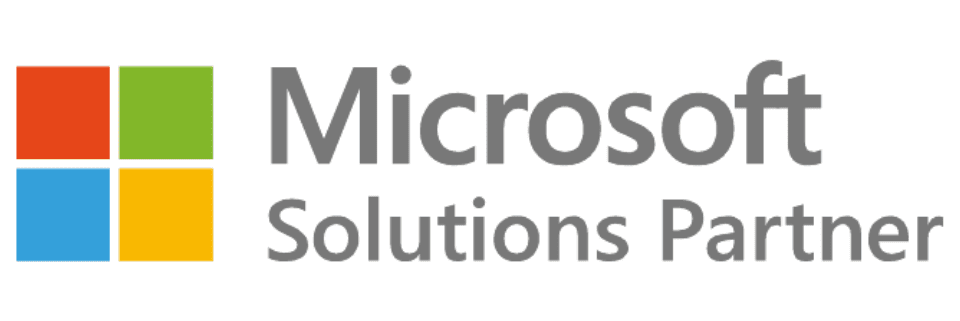Subscription Insight Series: thought leadership and practical help for modernising your subscription business
Healthcare has become a complex industry to manage in an ERP; medical money-trails are managed differently between countries and the continuous changes in patient care as new innovations and products are developed.
An emerging business-model is to provide healthcare subscription models for patients or company employees. Rather than requesting refunds from healthcare insurance companies or healthcare providers, a subscription model can cover the required needs a patient might have. The rise of e-commerce and home-delivery has accelerated as a spinoff from Covid-19, fuelling an increased need for an easy-to-use and simplified healthcare model. Patients are often in need of various medicals equipment or medicines. Many needs are recurring for example asthma patients requiring inhalers or other daily chronic medicines. Chronic healthcare often require recurring prescriptions, but acute conditions or “once-off” transactions are also plentiful. Many countries provide healthcare insurances based on a recurring pattern. Healthcare providers specialising in services or products are in need of business models that support recurring events and patterns of delivery and payments.
The benefits of a subscription-based model for healthcare providers include:
- Reduce caseload of healthcare workers;
- Improve patient ease-of-use for self-medicating;
- Reduce administrative processes and consequent costs;
- Improve consistency in healthcare services and deliveries;
- Improve quality and safety of care services.
In this article we’ll explore how a subscription model can drive efficient business processes in the healthcare industry.

Managing recurring transactional events in Healthcare business processes
Healthcare transactional events involve capturing the patient information, related healthcare insurance provider, healthcare professionals and the provisioning of services and products. Let’s zoom into the recurring events:
- The patient requires periodic delivery of products based on a prescription, healthcare plan or therapy, covered by a subscription plan;
- Healthcare providers offer subscription plans to their patients, such as insurance plans, concierge services or treatment plans.
The above events can be driven by both patient and healthcare provider in a digital fashion, using portals and eCommerce capabilities. At the same time, it is important to capture the eco-system that surrounds the healthcare provider and the patient, since it is not the same as a customer-supplier relationship. The eco-system often represents multiple parties that support the patient. An example is show below.
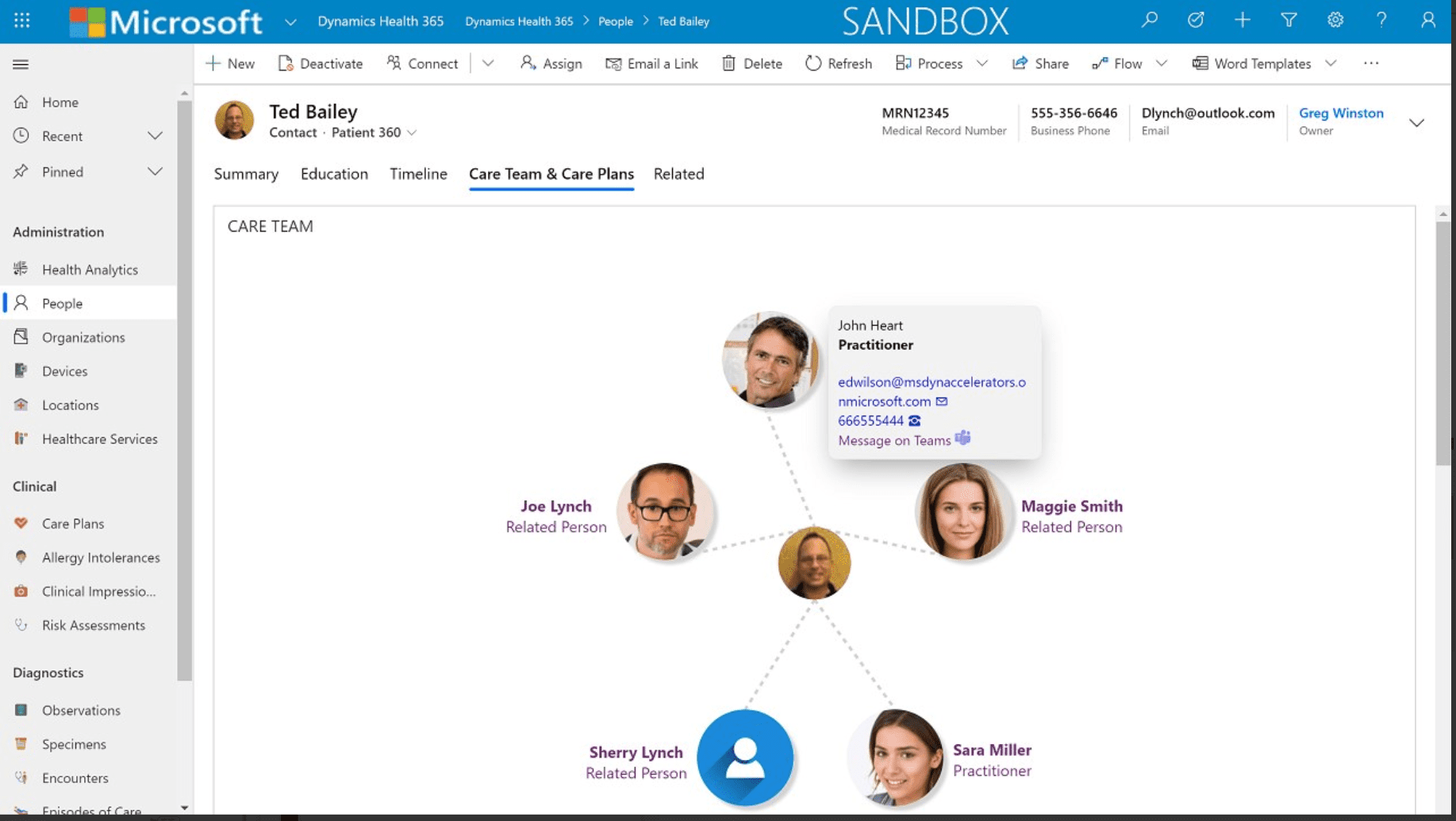
Apart from the people in the view above, there is a B2B2C relationship where healthcare providers support medical companies who provide care service or products to patients.
The eco-system plays an important role in order for the patient to consume the prescriptions, services or goods. A simple process flow illustrates this example:

This process is often manual and paper based, making it time consuming. Automating this process will clearly drive many benefits. How can this be achieved practically?
Automation of recurring prescriptions
Automating the process of providing a recurring prescription need to pass though several events in the eco-system. There are three main components to the transactions:
- Capturing the prescription and related subscription: diagnose-to-prescribe;
- Processing the (periodic) payment events: prescription-to-pay;
- Processing the continues provisioning of services and goods: deliver-and-receive.
Diagnose-to-prescribe
In this process the healthcare professional receives a patient during a visit. A diagnosis is made and treatment is established. The practitioner approves the prescription for the patient. The prescription carries the period of treatment and the provided services or medicine, as well as the recurrence cycle. In data terms, the practitioner issues a prescription order.

Once the prescription details are captured for the patient, the core data elements are now in place, which are:
- The period or term of the prescription (for example 6 months or a year)
- The products or medicine required and their delivery cycles/refills
- The approval of the appropriate right authority
At this point the data is captured during the patient journey, supported by the eco-system explained earlier. In Microsoft Dynamics 365 this process is supported by the Healthcare Accelerator or using best-in-class partner solutions, such as Mazik’s healthcare solution.
When the prescription is written, the transaction really resembles an order on an eCommerce website. The reordering, with approval should be a movement of data between the eco-system and then to the provider to be able to fulfil the prescribed treatment.
Prescription-to-pay
Now we have defined the prescription details, the order moves to payment (or in eCommerce terms, checkout). The bill is put forward for payment. Payment could be split between the patient and a health insurance company. In the digital setup this is managed via payment gateway and interfaces between financial and health insurance institutes and the healthcare provider.
When the payment is received the prescription is now in a state where it can be delivered. In architecture setup, the prescription moves from the front-end applications to the back end for fulfilment.
The subscription and prescription details are mapped towards Bluefort’s Subscription Management App for Microsoft Dynamics 365 as shown below:
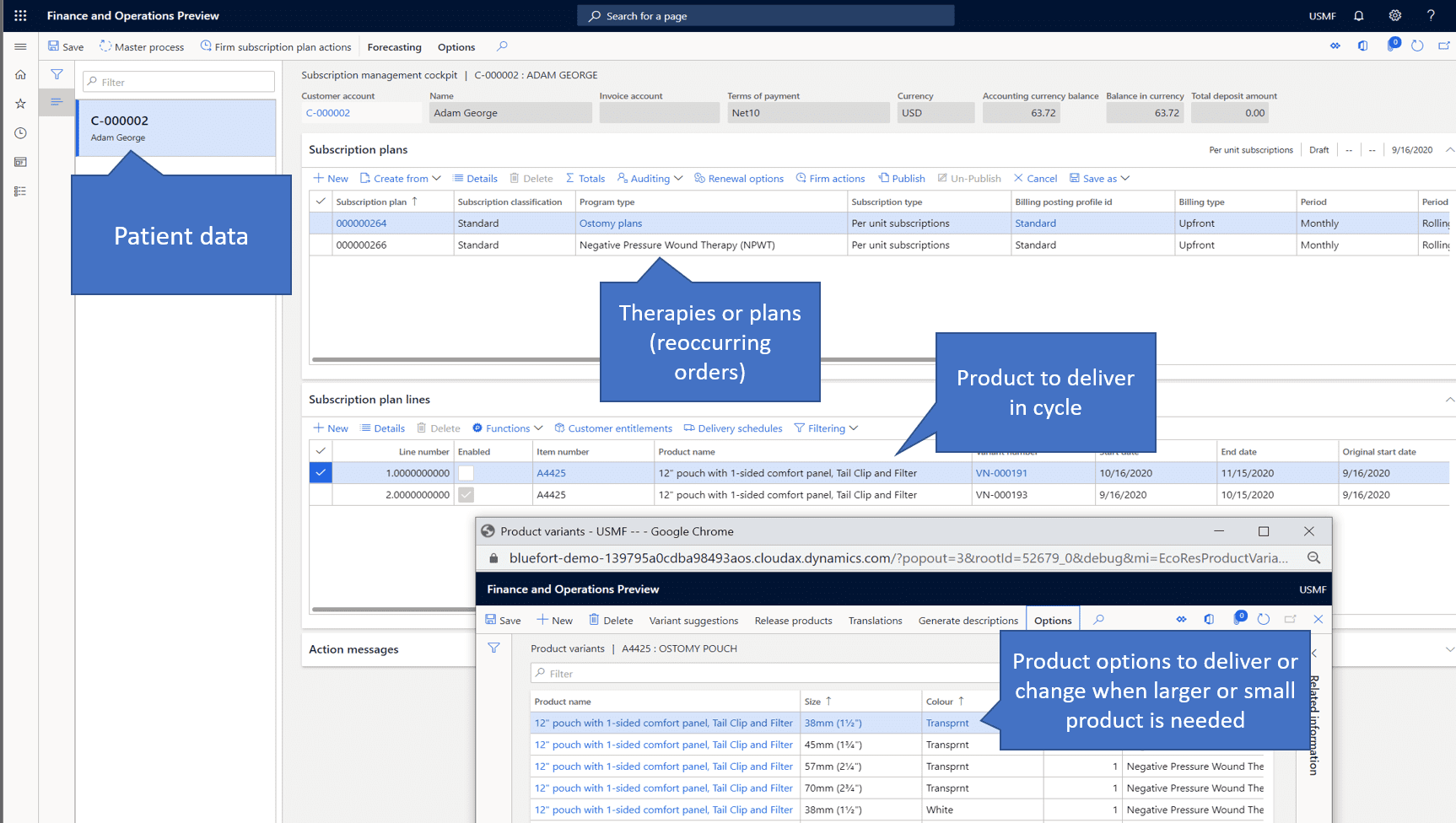
Fulfilment is based on payment received. The captured prescriptions details need to translate to back-office data, generating the following details:
- Customer record for the patient (if not yet created)
- Subscription plan covering the period or terms of the recurring prescription
- Product or services that are part of the prescription
- The cycle of delivery of products and services
- Payment data via payment gateway and/or health insurance coverage
In an optimal setup, the above data is pushed from a patient portal or eCommerce site into the back-end subscription or prescription data for processing fulfilment. Once all data is validated, pushing confirmation to the patient and health care provider (or other eco-system relations) by email summarising the details above to complete the digital feedback loop of this process.
Deliver-and-receive
Now the fulfilment process starts. The subscription and prescription details drive the operational execution of delivery and services to the patient. Based on the type of prescription two aspects are required to be delivered: the actual products or medicine and accompanying services, such as a therapy visit. This process is based on the captured details of the subscription and prescription and the related cycles.
Let’s review a practical example.
John needs to recover from a wound and has an approved prescription that consist of the following products and services forming part of the treatment plan for 3 months.
- Pain relief medicine to be supplied weekly in a bottle of 14 tablets each
- Weekly nurse services to clean and dress the wound
- Skin-close cream, supplied every 2 weeks
The patient has been offered a 3-monthly plan, paid monthly for treatment. The payment for the first month has been made and the subscription and prescription details are in place.

From a digital point of view the following steps drive the process:
- Based on the captured details, a business application should create an inventory forecast for the pain relief medication (to drive inventory replenishment), based on the cycle. This drives the purchase process via MRP processes;
- The business application should create the deliveries, for example every 2 weeks in advance, based on the schedule below:
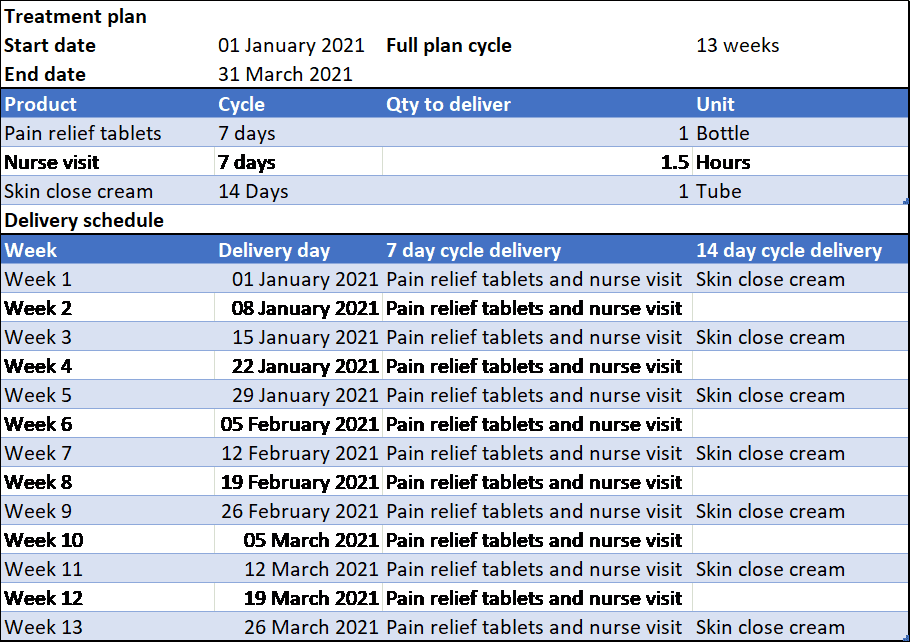
The delivery orders trigger the pick, pack and ship activities to send the product to the patient. The nurse should be scheduled to make a patient visit every week. To optimise the process, the two events could also be combined, so that the nurse delivers the products during the visit. The nurse should be scheduled accordingly.
- In healthcare, prescription provide treatment to resolve the medical condition. The uptake of the plan can be different for each patient. Therefore, the subscription model and prescription plan and cycle might deviate along the way. This drives the requirement to provide subscription as a flexible mechanism, that can be changed during the term or treatment period. It could be stopped, since the patient might have healed or might need to be prolonged. It can also be that a treatment must be abandoned and replaced with a new prescription and treatment plan.
Let’s follow the example above and walk trough a change. In the same schedule, the red lines are now cancelled as the treatment was successful, faster than planned.

- In this case the deliveries and nurse visits must be abandoned, and the last month’s payment can be dropped as well. If this would occur in the middle of a month, the proportionate value should be billed, during the close out of the subscription in week 9.
Automation of healthcare subscriptions
In general healthcare business processes can benefit from subscription models in other ways too. There are various models that create a much less bureaucratic event flow in healthcare when subscription models are applied.
Looking at practical examples, various countries offer subscription models, such as concierge medicine. This type of model allows patient to enrol into a medical subscription plan, providing them services and product entitlements that are part of the subscription. This eliminates billing by each item or service and creates a customer and health care provider process.
From a healthcare perspective, the billing simplification is driving efficiency and also provides scale – managing more patient and healthcare workers by eliminating unnecessary payment and financial processes.
Illustrated in the below example:
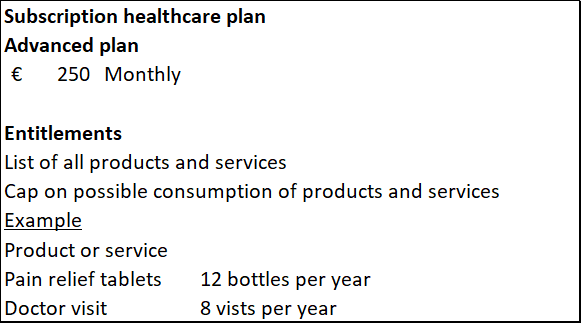
When the patient has prescriptions or orders products and services outside the entitlements, a charge is billed. Alternatively, the patient could be encouraged to move to the next plan, which could cover the required entitlements.
Business applications in Healthcare
Supporting healthcare business processes is quite specific due to the nature of the eco system, patient medical records, the required approvals for prescriptions as well as the fulfilment of treatments and bringing it all together in a unified application architecture.
The key business applications of an end-to-end solution should contain the following applications:
- Patient information portal or application used by patient, nurses and other related carers on behalf of the patient;
- eCommerce application layer used by patient, nurses and other related carers on behalf of the patient;
- Practitioner portal or application used by the healthcare professional authorised to create and approve regulated prescriptions;
- Service planning application to schedule medical visits to patients;
- Healthcare business application linked to the above applications to provide fulfilment of product deliveries, manage inventory and financial processes.
Ready to scale up your subscription business?
Contact us and take the next step here to gain the competitive edge with an automated subscription management solution.
Get in Touch with Us
Let’s talk about your business
Book Me
Click the button below to open up my calendar and find the right date and time for us to have a chat.

